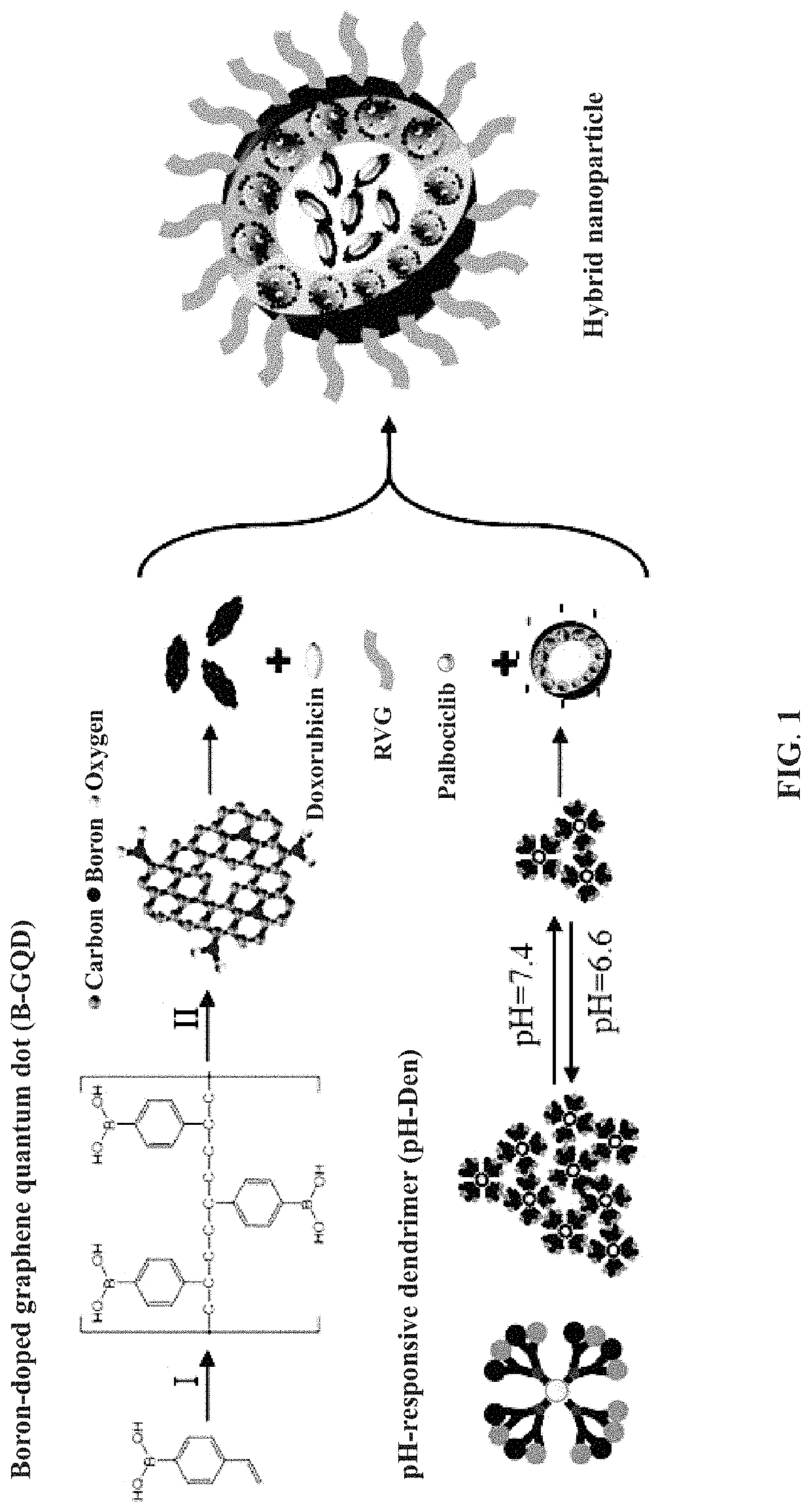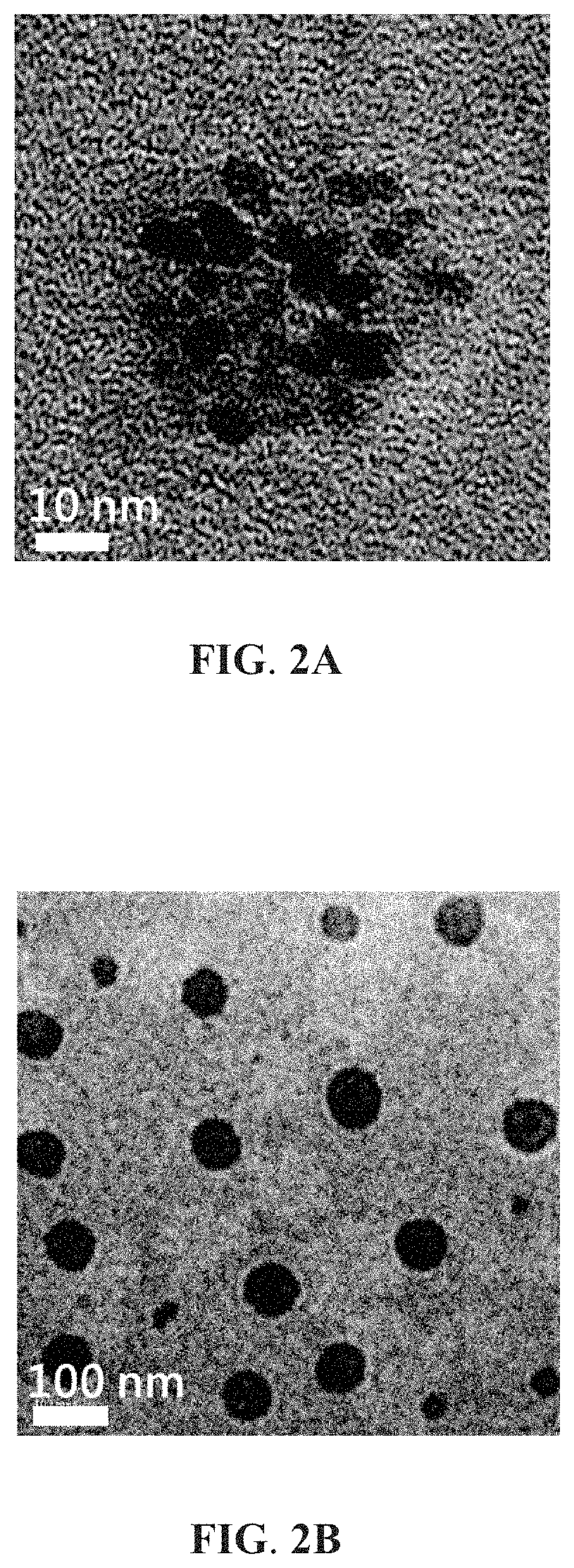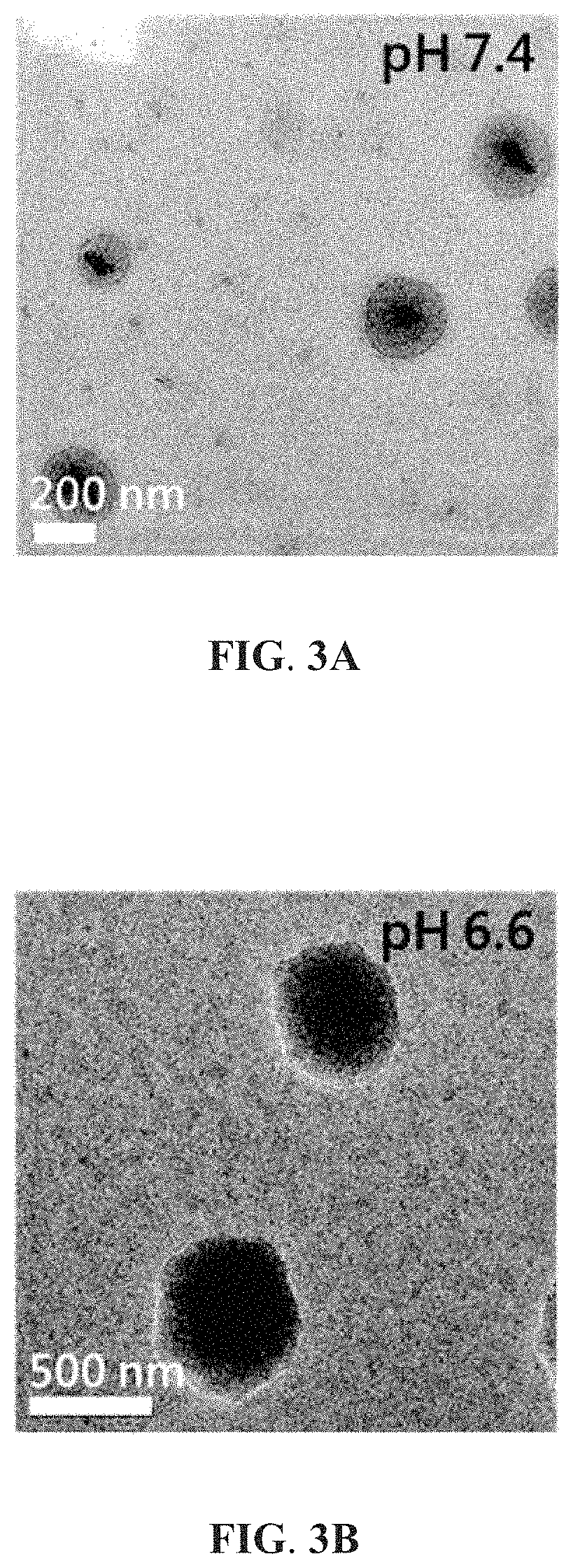Hybrid nanoparticles containing boron-doped graphene quantum dots and applications thereof
a nanoparticle and quantum dots technology, applied in the field of hybrid nanoparticles containing boron-doped graphene quantum dots, can solve the problems of limited therapeutic effects, hinder the diffusion and constant retention of drugs, and the majority of nanocarriers are unable to effectively accumulate in the tumor area, so as to avoid toxic side effects on normal tissues, prevent the premature release of loaded drugs, and facilitate large-scale preparations
- Summary
- Abstract
- Description
- Claims
- Application Information
AI Technical Summary
Benefits of technology
Problems solved by technology
Method used
Image
Examples
example 1
Preparation of Boron-Doped Graphene Quantum Dots (B-GQDs)
[0043]This example exemplifies the method of preparing one essential constituent molecule of the hybrid nanoparticle of the present invention, that is, the boron-doped graphene quantum dot (B-GQD). 75 mg of 4-vinylphenylboronic acid and 150 mg of boric acid were dissolved in a mixed solution of 2.5 mL of ethanol and 15 mL of acetone. After the solution was ultra-sonicated for 0.5 to 1 hour, 2.5 mL of 30% hydrogen peroxide was slowly added. The resulting mixed solution was ultra-sonicated for 10 minutes and heated at 150 to 400° C. for 2 to 48 hours to obtain a B-GQD crude product. The crude product was cooled and transferred into a dialysis membrane with a molecular weight cutoff of 1000 Da (OrDial D-Clean Dialysis Membranes MWCO:1000; Orange Scientific) in order for dialysis against deionized water at room temperature for three days, during which the water was changed once a day. Thereafter, B-GQD attached to the dialysis mem...
example 2
Preparation of Hybrid Nanoparticles
2.1 Preparation of pH-Responsive Dendrimers
[0044]The hybrid nanoparticle of the present invention preferably includes stimuli-responsive polymeric molecules which allow the size of the hybrid nanoparticle to increase in the tumor environment, for example, in the weakly acidic tumor environment (with a pH value of about 6.5-7.0). In the present example, the method of preparing the stimuli-responsive polymeric molecules is exemplified by synthesis of a pH-responsive dendrimer (referred to as pH-Den) having a molecular weight ranging from 1,000 to 60,000 Da. 4.4 mg of 4-(bromomethyl)phenylboronic acid and 100 mg of G2 PAMAM dendrimers were dissolved in DMSO for reaction at 80° C. for 24 hours to obtain a crude product of PAMAM dendrimers modified with phenylboronic acid (PBA-PAMAM), which is an example of the pH-responsive dendrimer. The crude product was cooled and transferred into a dialysis membrane with a molecular weight cutoff of 1000 Da (OrDial...
example 3
Structure and Characteristics of the Hybrid Nanoparticles
[0048]In order to examine the structure and characteristics of the hybrid nanoparticle of the present invention, transmission electron microscopy (TEM) was used to monitor the morphology and behavior of B-GQD / pH-Den hybrid nanoparticles described in Example 2.2 and the constituent units thereof. FIG. 2A shows a TEM image of boron-doped graphene quantum dots; and FIG. 2B shows a TEM image of polyamidoamine dendrimers modified with phenylboronic acid (an example of the pH-responsive dendrimer). According to FIG. 2A, the boron-doped graphene quantum dots form clusters in water, and each quantum dot has a particle size of about 2 to 5 nm. According to FIG. 2B, the pH-responsive dendrimers self-assemble in water into a sphere having a particle size of about 50 to 80 nm. FIGS. 2A and 2B demonstrate that the boron-doped graphene quantum dots and polyamidoamine dendrimers modified with phenylboronic acid are successfully synthesized.
[...
PUM
| Property | Measurement | Unit |
|---|---|---|
| particle size | aaaaa | aaaaa |
| particle size | aaaaa | aaaaa |
| molecular weight | aaaaa | aaaaa |
Abstract
Description
Claims
Application Information
 Login to View More
Login to View More - R&D
- Intellectual Property
- Life Sciences
- Materials
- Tech Scout
- Unparalleled Data Quality
- Higher Quality Content
- 60% Fewer Hallucinations
Browse by: Latest US Patents, China's latest patents, Technical Efficacy Thesaurus, Application Domain, Technology Topic, Popular Technical Reports.
© 2025 PatSnap. All rights reserved.Legal|Privacy policy|Modern Slavery Act Transparency Statement|Sitemap|About US| Contact US: help@patsnap.com



